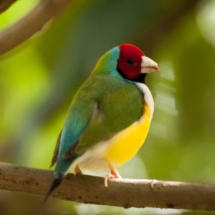About
About
The variety and abundance of plants, animals and insects in a given area define its environmental health. Each plays a critical part, and imbalances can lead to catastrophe — not only for the species but also for humans.
That delicate mix is what is known as biodiversity, and the University of Florida is launching an initiative to study and protect it. Under its Preeminence Plan, its roadmap to becoming one of the nation’s top 10 public research universities, UF will invest $725,000 to add five faculty members to study biodiversity. Two will be in the Florida Museum of Natural History, two in the College of Agriculture and Life Sciences, and one in the College of Liberal Arts and Sciences.
“The sheer breadth of biological expertise at UF, combined with the depth of bioinformatics and collection resources at the museum, place UF among the leading institutions in higher education to tackle the challenges of biotic diversity in Florida and the nation,” said Florida Museum director Doug Jones.
The biodiversity initiative brings to 27 the number of areas in which UF is concentrating its Preeminence Plan resources. Others include big data, neuroscience and the brain, plant genomics and online learning.
UF and the state of Florida are uniquely positioned to be at the vanguard of research aimed at biodiversity.
Florida’s ecosystems include more than 4,000 plant species, and the state supports the highest concentration of federally sensitive, threatened or endangered species in the country. On the other side of the equation are invasive species: More than half the plant life in South Florida is non-native, throwing that touchy balance out of whack.
Enter UF, home of the Florida Museum of Natural History, which houses more than 40 million specimens and artifacts and ranks as the second-largest university-based natural history museum in the country, behind only Harvard.
The museum also is the home of iDigBio, the national center for creating a digital catalog of the earth’s flora and fauna. UF’s standing as a national and international biodiversity leader is further strengthened by its status as both a land- and sea-grant university.
David Richardson, interim dean of the College of Liberal Arts and Sciences, said the new initiative will take advantage of some of the college’s best strengths.
“In this exciting and expanding field, UF can excel through the interdisciplinary approach of this investment,” he said. “The college will focus on biodiversity modeling, and we will build on our existing strengths in statistics, biology, and mathematical modeling of biological systems.”
The consequences of not addressing biodiversity issues could be noticeable on our dinner plates and even in our gas tanks.
“We share the planet with plants and animals on which we depend for food, fiber and fuel. Biodiversity makes us less vulnerable to the loss of those organisms as the raw materials for our lives, and it strengthens our souls by surrounding us with life in myriad forms,” said Jack Payne, UF’s senior vice president of agriculture and natural resources. “The web of life is incredibly complex and can’t be understood from any one perspective. UF’s reinforced expertise holds the promise of making the planet and its people healthier.”

















